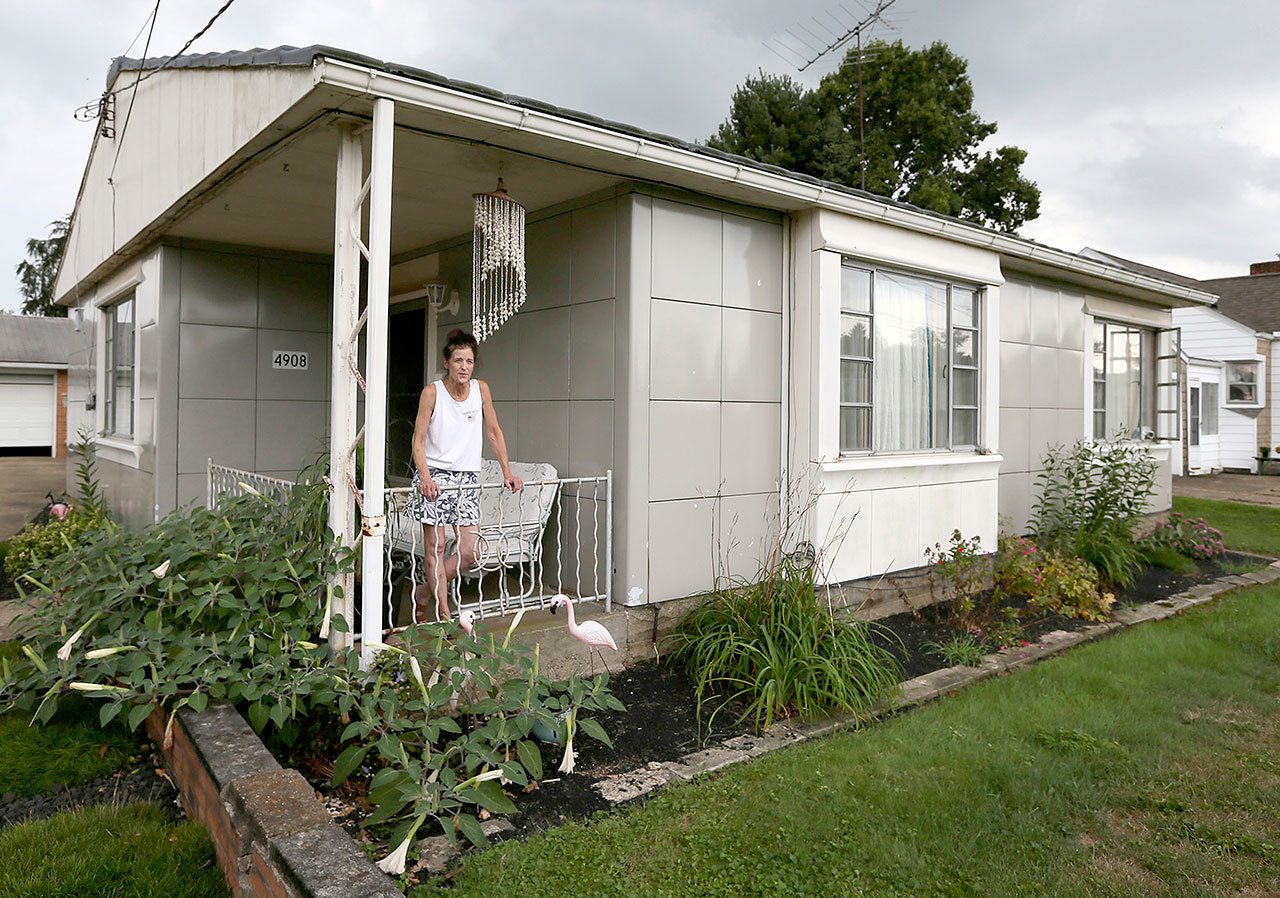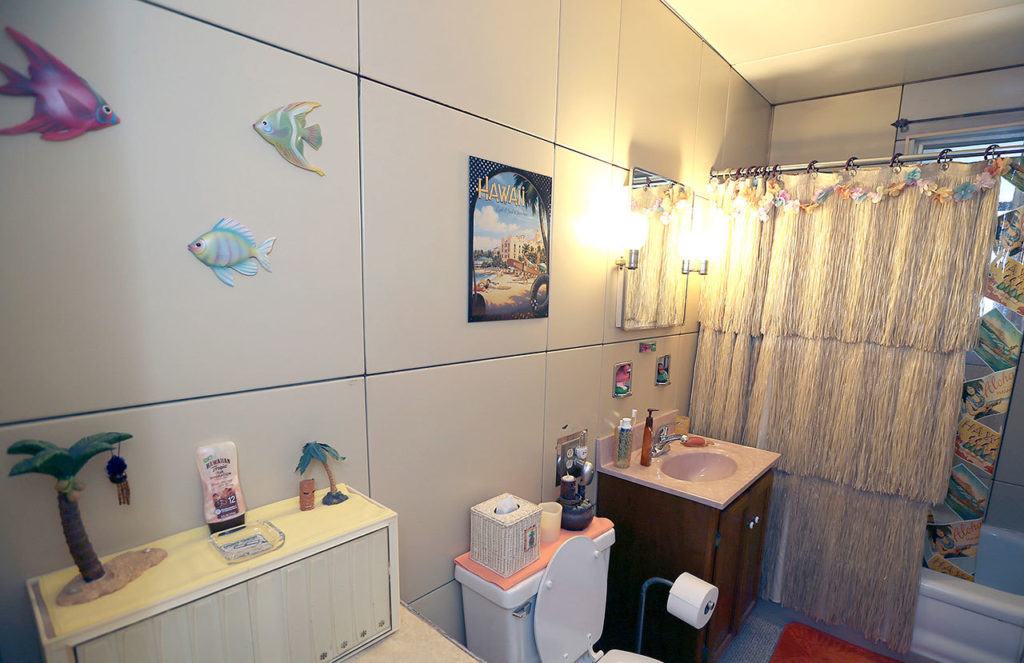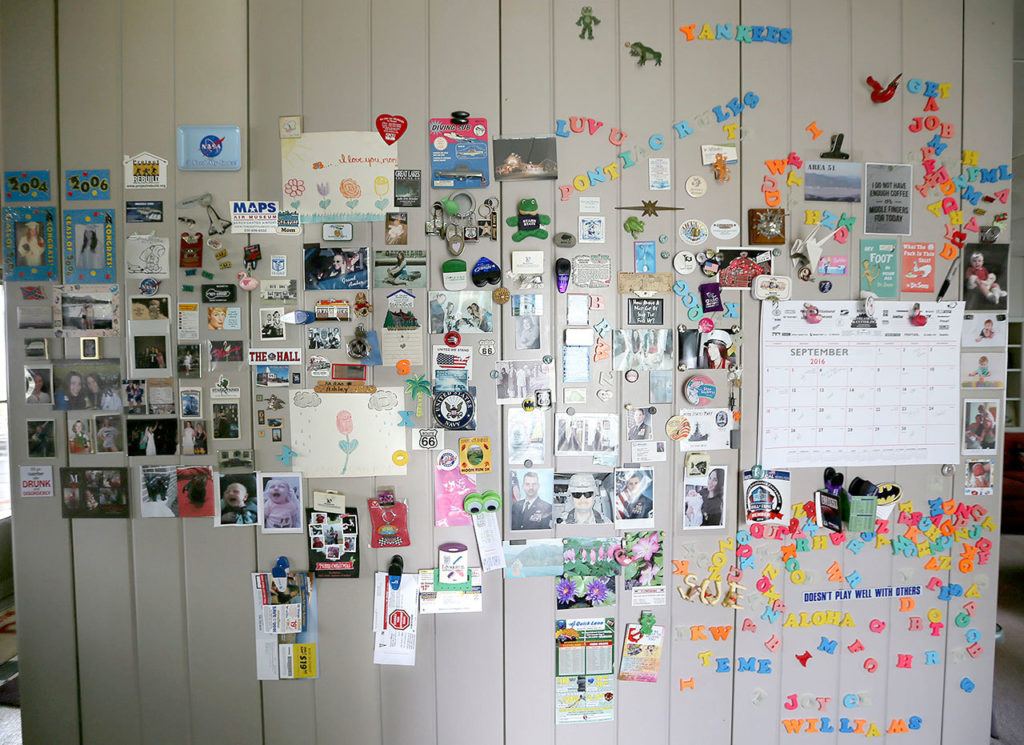By Mary Beth Breckenridge, Akron Beacon Journal
PERRY TOWNSHIP, Ohio — Sue Williams wasn’t exactly impressed when she learned the little house down the street was a Lustron home.
She’d requested a showing when she saw the house was for sale, because she was interested in the big garage out back. When the agent mentioned it was a Lustron home and suggested she check out the enameled steel houses on the Internet, “I’m like, yeah, well, whatever,” she recalled.
Now she’s a convert.
Since 2009 the quirky cottage in Perry Township near Canton, Ohio, has been Williams’ home. She embraces its compact layout, its steel interior walls and the optimism embodied by its forward-thinking, midcentury style.
The house is one of 68 that Cleveland photographer Charles Mintz profiles in “Lustron Stories,” a book recently released by Trillium Books, a division of the Ohio State University Press.
Mintz explores what it’s like to live in a Lustron home — and by extension, what it means to be a homeowner — by capturing images of the occupants in their no-nonsense dwellings.
Lustron houses were prefabricated homes manufactured in Columbus, Ohio, from 1948 to 1950. The mass-produced, easy-to-assemble structures were intended as a solution to the postwar housing shortage, but they never fulfilled that promise.
Only about 2,680 of the homes were built before the Lustron Corp. went bankrupt in 1950. Williams’ is one of roughly 1,500 that survive.
Lustron produced eight models, all of them boxy, one-story designs. The houses were made entirely from steel, right down to their frames, and the exterior surfaces had glass baked on for durability.
Those features were meant to make Lustron homes easy to maintain, but they also make the houses hard to update. You can’t just call a painter to change your house color, Mintz said. You can’t cut a hole in the exterior to add a modern feature like central air conditioning, because the glass coating will shatter.
“It’s almost like having a pet,” he said — lovable, but not without challenges.
Mintz’s idea for photographing the houses and their owners grew from his dealings with the Ohio History Connection and his fascination with a Lustron home that had been reconstructed inside the historical society’s Ohio History Center. The book started as a photography exhibit, which was first shown in 2015 in Louisville, Ky., and then at the center in Columbus.
His intention was to show that, to their owners, “these homes are not just where I eat and sleep and keep my bowling ball,” he said. “There’s real meaning here.”
Working from online databases of Lustron homes, Mintz wrote to homeowners, asking permission to interview and photograph them. A lot of the letters were ignored, he said. One was returned with “This is identity theft” written on the envelope.
But some of the recipients opened their homes to him and even recruited other owners of Lustron houses to participate. A sort of community grew up around the project.
“They care about each other,” he said. “They care about me. They care about what I’m doing. And that’s pretty sweet.”
Mintz tells the homeowners’ stories only in photographs, supplemented by an introduction to the book and a history of Lustron homes. It’s a spare approach to storytelling, one he considered more effective than pairing the pictures with words.
The images show the diversity of people who live in Lustron homes. There’s an elderly couple holding hands on their early-American sofa. There are two women seated in an artfully decorated dinette, a contemporary drum light fixture suspended overhead. There’s a middle-aged man sitting in a living room devoid of decoration, walls shabby and a lamp lying broken beneath a worn chair.
The homeowners included nuclear families, single people, folks with disabilities and one gay couple, Mintz said. Although few are people of color, he said the owners aren’t necessarily the white, able-bodied, blue-collar families that Lustron homes were marketed to.
Williams is photographed in her living room, seated next to a blond wood console with a midcentury shelving unit above. On either side of the shelves are star-burst wall decorations she crafted from Styrofoam balls and wood dowels, spray-painted gold.
Williams has relished the chance to decorate the 990-square-foot house in period style, using secondhand finds, creativity and often, a healthy dose of humor.
Her shower curtain is made from grass skirts. Her living room curtains were once plain panels that she embellished with geometric patterns using fabric paint. A vintage couch and matching armchair upholstered in nubby frieze cost her $50 at the Salvation Army.
She even found retro turquoise appliances for her kitchen, including a range with push buttons to operate burners.
The look is kitschy and cheerful, but that’s the point. Her nursing job at Affinity Medical Center in Massillon can be demanding, she said, and she wants her home to offer respite from the stress.
“That’s the whole thing. It’s fun,” she said.
The house has what Williams called “totally weird” features, such as steel walls grooved as though they might be mistaken for paneling. But it also has a thoughtful, space-saving layout and such practical attributes as pocket doors, ample closets and halls wide enough to accommodate a wheelchair, should she ever need one.
“I’ll be able to die in this house,” she said with a throaty laugh.
She’ll go out smiling.
About Lustron
What: Lustron homes were prefabricated houses made in a factory, transported in parts to a construction site and assembled. They were built from interlocking porcelain-enameled panels attached to a steel frame, with plastic gaskets between the panels to seal the gaps. Even the interior walls and ceilings were metal.
How they were sold: A network of dealers sold the homes and were also responsible for acquiring the land and preparing the site.
Why the company failed: The company’s demise was caused by a combination of overly optimistic promises, poor decision making, political chicanery and resistance from construction unions and building inspectors.
To buy Mintz’s book: Order it for $49.95 from Amazon.com or from Ohio State University Press at ohiostatepress.org or 800-621-2736, or check your local bookstore. Many will order books if they’re not in stock.
To learn more: The Ohio History Connection has extensive information on Lustron at http://tinyurl.com/ohiolustron
Talk to us
> Give us your news tips.
> Send us a letter to the editor.
> More Herald contact information.




























